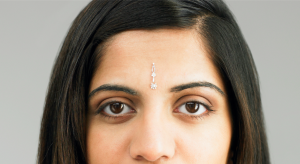
Source: Getty Images
Originally published on Mommy Man and cross-posted here with their permission.
Imagine you’re at the train station, taking your kids into the city to see The Lion King.
A man steps off the train, and two toddlers run up to him shouting, “Daddy! Daddy!”
He gives out two hugs and about a thousand kisses and tells them how much he missed them while he was at work. You’ve witnessed scenes like this many times, but as always, your heart melts. Then the dad stands up, walks a little further down the platform and kisses… another man.
Well, that’s different.
“How was your day?” the first guy asks, and the other one starts talking about who got time outs, why the kids have maple syrup in their hair, and who flushed what down the toilet right before they left.
Okay, back to normal.
You’ve probably done the math by now – Look! Gay dads! – but there’s a decent chance you’ll feel a tug on your leg, and your kid will look up at you and ask, “Yo, what’s the deal there?”
This is the story of my life. I am a gay dad, and I confuse children.
I’m sure it happens more than I realize – at the supermarket, at the park, at preschool. Just by acting like any other parents, my partner Drew and I are inadvertently sparking countless conversations that start with, “Where’s their mommy?”
You’re free to handle that question however you want, of course.
But if you don’t know where to begin, allow me to help.
You see, when Drew and I decided to have kids, we knew that the gay dad job description would include explaining our family to the world for the rest of our lives. That’s one of the reasons I started my blog.
It’s also why I am kindly providing you, the sympathetic straight parent, with some guidelines. (Unsympathetic straight parents are free to ignore my suggestions, in which case, I’ll enjoy watching them squirm.)
Obviously, what you say will depend on how old your kids are and how much exposure they’ve had to gay people previously, but in a broader sense, these suggestions should apply to anyone.
I’m not a child psychologist, just a gay dad who’s thought a lot about the issue and who has a big stake in it. After all, I don’t want your kids coming up to my kids one day and telling them they’re weird for not having a mommy.
If you don’t want that either, here are a few things to keep in mind:
1. Use the word “gay.”

Everyone’s concentrating on taking the negative connotation away from the word “gay,” but at the same time, let’s not forget to encourage the positive.
We don’t want Ito be a curse, so go ahead and teach it to your kids. That’s how we’ll really take the sting out of the word.
“Oh, Uncle Doug and Uncle Max? They’re gay.” “Aunt Vera and Aunt Debbie aren’t sisters, honey. They’re lesbians.” “Well, statistics suggest at least 3 of the Smurfs must be gay.”
Don’t make a big deal about it. Just say it.
If your kids hear some jerk at school sneering “that’s so gay,” their response will be, “Yeah? So what? So are Uncle Max, Aunt Vera and, most likely, Brainy.”
2. You don’t have to pretend half the world is gay.

Don’t play down the fact that your kids may have witnessed something unfamiliar.
“Geez, Madison. They have two daddies, what’s the biggie?”
It’s natural for poor little Madison to be confused, so give her a damn break.
Kids are probably going to assume all families have one mommy and one daddy, because that’s all most of them see. You can be honest. Use words like “most” and “some.”
“Most families have a mommy and a daddy, but some have two mommies or two daddies.”
As long as you don’t attach a value judgment to that statement, it really is no biggie.
The same goes when explaining single parent families, divorced families, or anything else your child might be witnessing for the first time.
Some kids might say something like “that’s weird,” or they’ll think you’re playing a joke on them. That should just be a reminder of why you’re having this conversation.
Get to your kid before ignorance does. If you’re honest with them, they’ll get it.
Explain that gay families are less common than the usual mommy/daddy family, but they’re every bit as valid.
“It’s not weird. It’s just different than our family.”
3. Get your mind out of the gutter.

It seems silly that I even have to say this, but when some people think about homosexuality and kids, they imagine that you’re suggesting they graphically describe intercourse to kindergarteners.
Um, no.
All you should be doing is answering the questions they’re asking, and save the rest for junior high health class.
If they wonder why Owen has two daddies, it’s because “his daddies are in love” or because “some men love other men.”
Hopefully, you’ve taught your kids to understand what love is, so no further explanation should be required.
And do use the word “love.” That’s what we’re talking about here.
You don’t need to say “attracted to” or “some boys like boys.”
“Like” is how they feel about each other. A kid might think, “Well, I like boys. I guess I’m gay.”
Compare it to your own relationship (assuming you have a good relationship). “You know the way Mommy and I love each other? That’s how their daddies (or mommies) feel about each other.”
And if your kid says “yuck,” it’s probably because they feel the same way about when you and your spouse get all schmoopy-doopy with each other. That’s progress.
4. Don’t make it about your kid – yet.

Understanding gay parents is a big enough topic of discussion, and your kid probably won’t be prompted to wonder about their own sexuality at this point.
You don’t need to say, “You might marry a man someday yourself, Junior!”
While it’s great to plant the seeds of acceptance early, you’ll probably just end up confusing them more.
Your kids have plenty of time to figure their own feelings out, and when the time comes, make sure you let them know that you love them no matter what.
But no, they can’t marry Brainy Smurf.
5. If your kid does ask you to speculate, you can tell them they’ll “probably” be straight.

Again, only if your kid expresses some curiosity should you even broach the subject.
But if they’re wondering who they might marry someday, feel free to tell them, “You’ll probably marry someone of the opposite sex, but I’ll accept you either way.”
Of course, if you’re like the mom from the amazing blog Raising My Rainbow, your “probably” might lean the other way. Just take your cues from your kid.
6. Remember this magic phrase: “Love is what makes a family.”

It’s possible your kids will ask something like, “But doesn’t everyone need a mommy?”
Even kids who don’t know exactly where babies come from understand that women are the ones who get pregnant and give birth. When that’s all you know, then two daddies just don’t add up.
Again, don’t go into any more detail than you need to.
Remind your kid that while it’s a woman who gives birth to a baby, your mommy(-ies) and/or daddy(-ies) are the one(s) who raise you.
It’s no different than how you’d explain adoption by a straight couple. “The Strattons flew to Beijing and brought little Daisy home. Now they’re her Mommy and Daddy.”
What kids want to know is that the little boy or girl they see whose family looks different is still being well taken care of.
Assure your children that the kids are in good hands, because love is what makes a family, and those parents love their kids as much as you love yours.
7. Most importantly, just talk to your kids.

Your kids are bound to see a gay family sooner or later, even if it’s just Mitchell and Cameron on Modern Family.
So if they come to you with questions, it’s really important that you don’t get weird about it.
Don’t change the subject, don’t tell them they’re too young to understand, and definitely don’t lie and say that the mommy is home doing dishes or off fighting in Afghanistan. Otherwise, the message you’re sending is that there’s a reason to be uncomfortable around gay families.
The same goes for all kinds of families, whether they have two moms, two dads, a single mom, a single dad, foster parents, or if they’re being raised by wolves – just explain that that’s a different kind of family and gee, isn’t it nice that everyone’s a little different.
Which leads me to a big secret.
You see, there is a gay agenda. It’s true.
What most people don’t realize is that the gay agenda isn’t “everybody should be gay.”
It’s “everybody should be themselves.”
Be a nerd, be a Yanni fan, be a real housewife of your particular geographic region. Whatever. It’s all part of the same cause, and it’s a great message to teach your kids.
—
I shouldn’t have to say this in the twenty-first century, but for anyone who’s still wondering: No. I don’t want to make your kids gay.
I just want to live my life with a sense of mutual respect for everyone else on this planet.
If you want the same thing, then let your kids learn by your example. Show them that nontraditional families are nothing to be afraid of.
Teaching your kids to be accepting of gay people and gay families is a great way to teach them acceptance in a broader sense – and to teach them the ultimate lesson: to be accepting of themselves.
I know some people think differently, but that’s what I call family values.
Want to discuss this further? Login to our online forum and start a post! If you’re not already registered as a forum user, please register first here.
Jerry Mahoney lives with his boyfriend, Drew, and theirr twins Bennett and Sutton, who were born in August 2009. He is currently a stay-home dad raising his kids full-time, but while they’re sleeping, he’s working on a memoir about his family’s whole crazy story, tentatively titled Where Do Gaybies Come From? Follow him on Twitter @WhyJerryWhy.
Search our 3000+ articles!
Read our articles about:
Our online racial justice training
Used by hundreds of universities, non-profits, and businesses.
Click to learn more




















